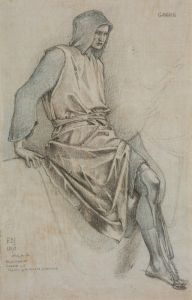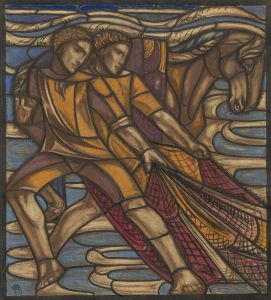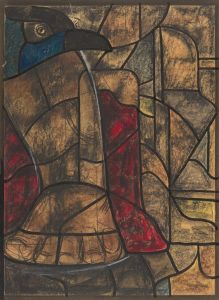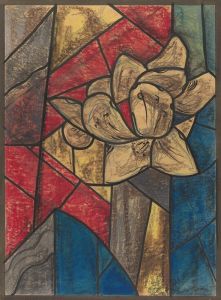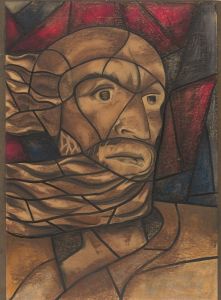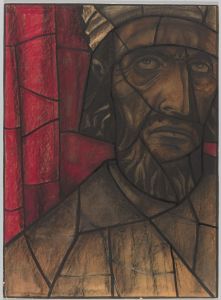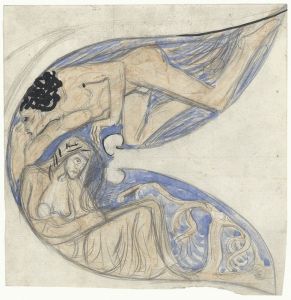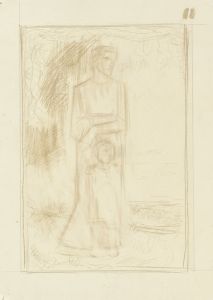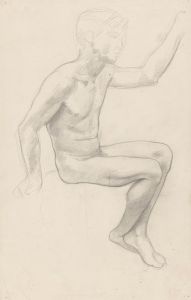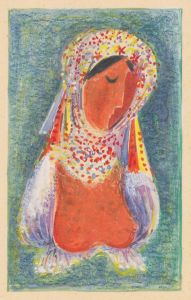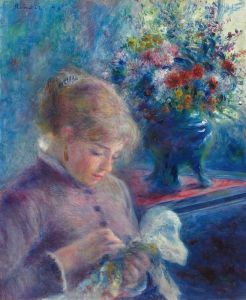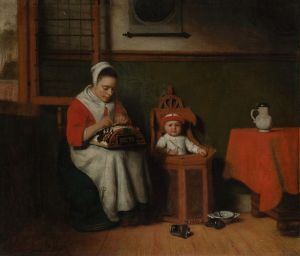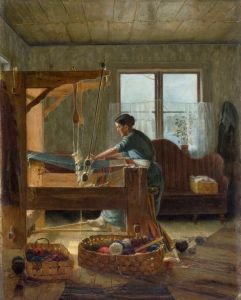
Tapijtontwerp voor raam in het Noordertransept van de Dom te Utrecht
A hand-painted replica of Richard Nicolaüs Roland Holst’s masterpiece Tapijtontwerp voor raam in het Noordertransept van de Dom te Utrecht, meticulously crafted by professional artists to capture the true essence of the original. Each piece is created with museum-quality canvas and rare mineral pigments, carefully painted by experienced artists with delicate brushstrokes and rich, layered colors to perfectly recreate the texture of the original artwork. Unlike machine-printed reproductions, this hand-painted version brings the painting to life, infused with the artist’s emotions and skill in every stroke. Whether for personal collection or home decoration, it instantly elevates the artistic atmosphere of any space.
Richard Nicolaüs Roland Holst was a prominent Dutch artist known for his contributions to the Arts and Crafts movement in the Netherlands. One of his notable works is the "Tapijtontwerp voor raam in het Noordertransept van de Dom te Utrecht" (Carpet Design for the Window in the North Transept of the Utrecht Cathedral). This work is an example of his skill in integrating art with architectural elements, a hallmark of his artistic philosophy.
Roland Holst was born on December 4, 1868, in Amsterdam, into a family with a strong artistic tradition. He studied at the Rijksakademie van Beeldende Kunsten in Amsterdam, where he was influenced by the prevailing artistic movements of the time, including Symbolism and the Arts and Crafts movement. His work often reflects a synthesis of these influences, characterized by a strong sense of design and a commitment to craftsmanship.
The Utrecht Cathedral, also known as the Dom Church, is a Gothic-style church that has been a significant religious and cultural landmark in the Netherlands for centuries. The cathedral's architecture and interior design have been enhanced by various artists over the years, and Roland Holst's contribution is part of this rich tapestry of artistic endeavor.
Roland Holst's design for the window in the north transept of the cathedral is a testament to his ability to blend decorative art with architectural spaces. While specific details about the design itself are limited, it is known that his work often featured intricate patterns and a harmonious use of color, which would have complemented the Gothic architecture of the cathedral. His designs were not merely decorative but were intended to enhance the spiritual and aesthetic experience of the space.
Throughout his career, Roland Holst was deeply involved in the broader artistic community in the Netherlands. He was a member of several influential art societies and was committed to the idea that art should be accessible and integrated into everyday life. This philosophy is evident in his work for the Utrecht Cathedral, where he sought to create art that was both beautiful and functional.
In addition to his work as an artist, Roland Holst was also a respected teacher and writer. He served as a professor at the Rijksakademie and wrote extensively on art and design, advocating for the integration of art into public and private spaces. His influence extended beyond his own work, as he inspired a generation of artists and designers in the Netherlands.
Richard Nicolaüs Roland Holst passed away on December 31, 1938, but his legacy lives on through his contributions to Dutch art and architecture. His work for the Utrecht Cathedral remains a significant example of his artistic vision and his commitment to the integration of art and architecture. While specific details about the "Tapijtontwerp voor raam in het Noordertransept van de Dom te Utrecht" are scarce, it is clear that Roland Holst's work continues to be appreciated for its beauty and craftsmanship.





